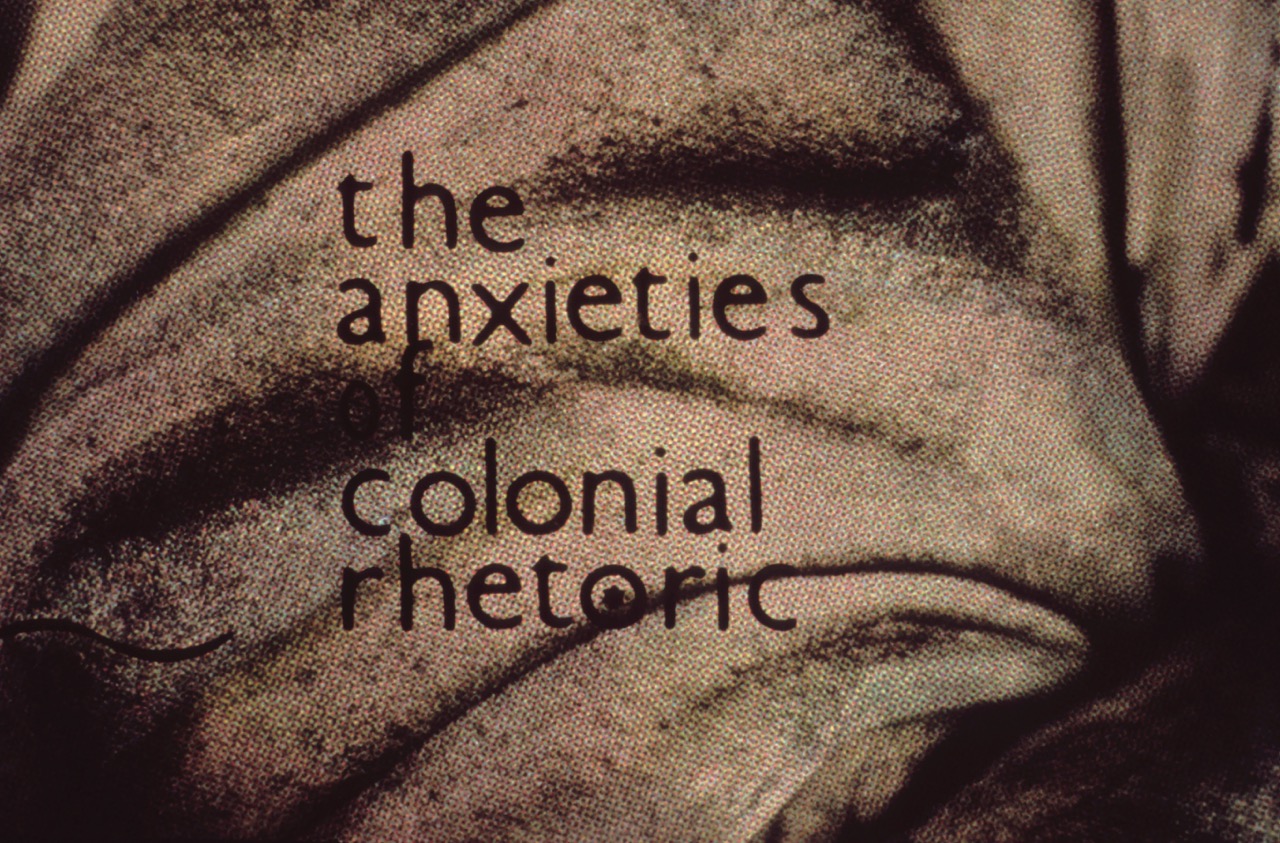 4 Columns
4 Columns
We’ll be back with a regular 4Columns issue on September 7. In the meanwhile, please enjoy our third summer missive: critical reflections on the cultural legacies of the former British Empire.

John Akomfrah, Expeditions One: Signs of Empire, 1983 (still). Single-channel 35mm color Ektachrome slides transferred to video, sound, 26 minutes. © Smoking Dogs Films. Courtesy Lisson Gallery.
Our senior editor Brian Parks is in the United Kingdom this summer to present his new play, The House, at the Edinburgh Festival Fringe. His trip across the pond gives us occasion to reflect not only on some of the UK’s most dynamic cultural figures, but also the colonial traumas that persistently haunt Britain’s current political impasse:
Looking explicitly at the UK’s near colonial past, Hannah Black reviewed Caryl Phillips’s latest novel, A View of the Empire at Sunset. The book is a fictionalized account of author Jean Rhys’s return to Edwardian London from Jamaica, where she spent the first sixteen years of her life, during the height of the British Empire. Rhys began writing her most famous work, Wide Sargasso Sea, at the start of the chaotic process of decolonization; Phillips began his novel during the political cataclysm of Brexit, a time that has rebirthed imperial ghosts.
The legacy of colonialism looms large, too, in the work of London-based video artist John Akomfrah, one of seven members of the Black Audio Film Collective, a gang of young British para-academics, theory heads, and image scientists who developed a body of work that flouted all the rules about how black and immigrant stories could be told. Sukhdev Sandhu reviewed his recent solo show at the New Museum.
And earlier this year, our London-based contributor Brian Dillon reviewed Zadie Smith’s Feel Free, a collection of essays ranging from book reviews to reflections on Brexit to a precisely observed meditation on the middle-class bathroom. Some of the finest pieces hit close to home: they describe Smith’s childhood and adolescence in north London, the displacements involved in being a mixed-race English writer living in New York. Much of this personal is quite political, even when most shut-in or seemingly nostalgic.